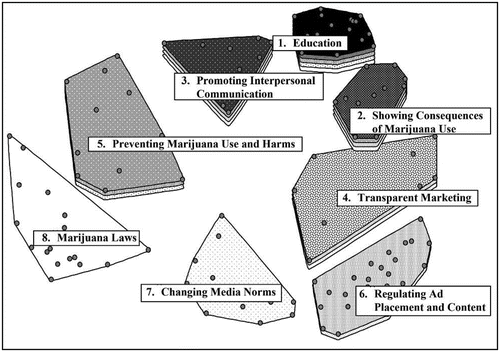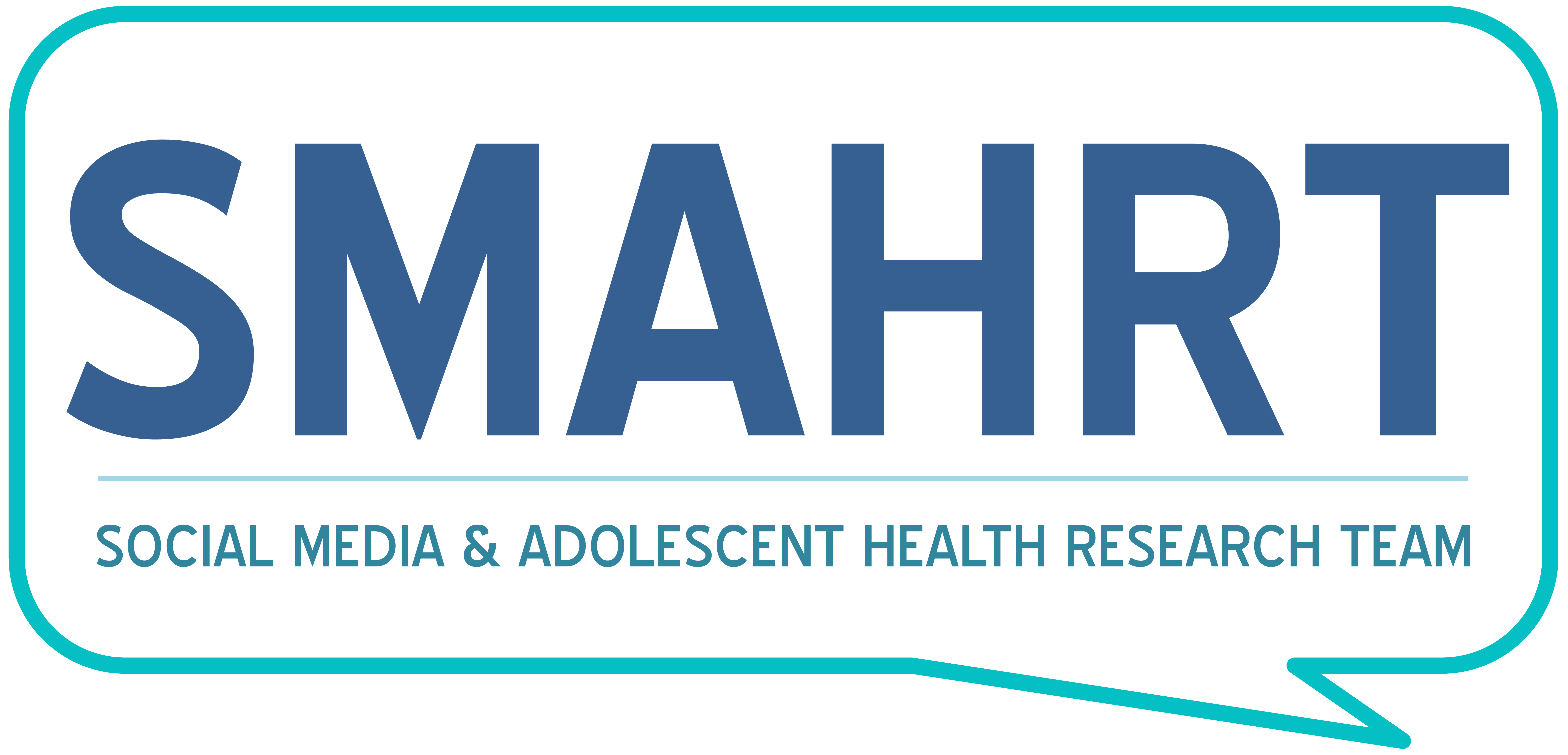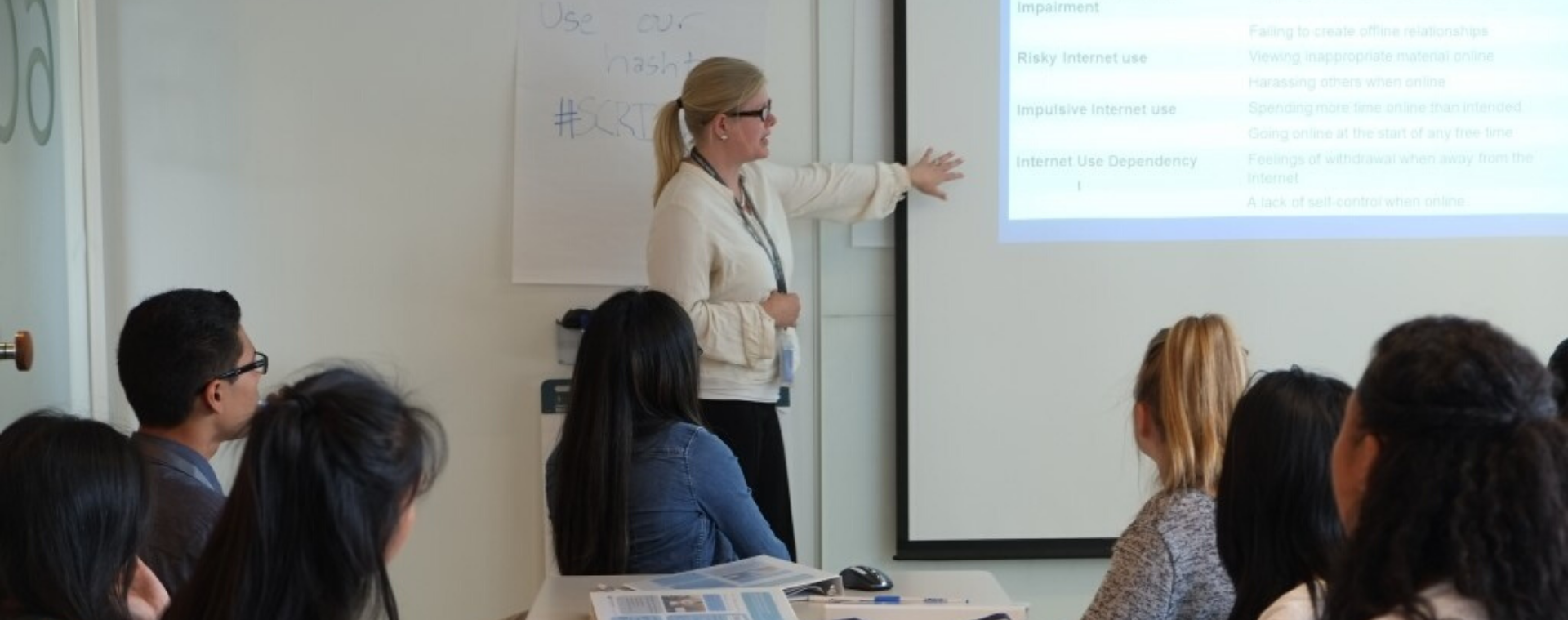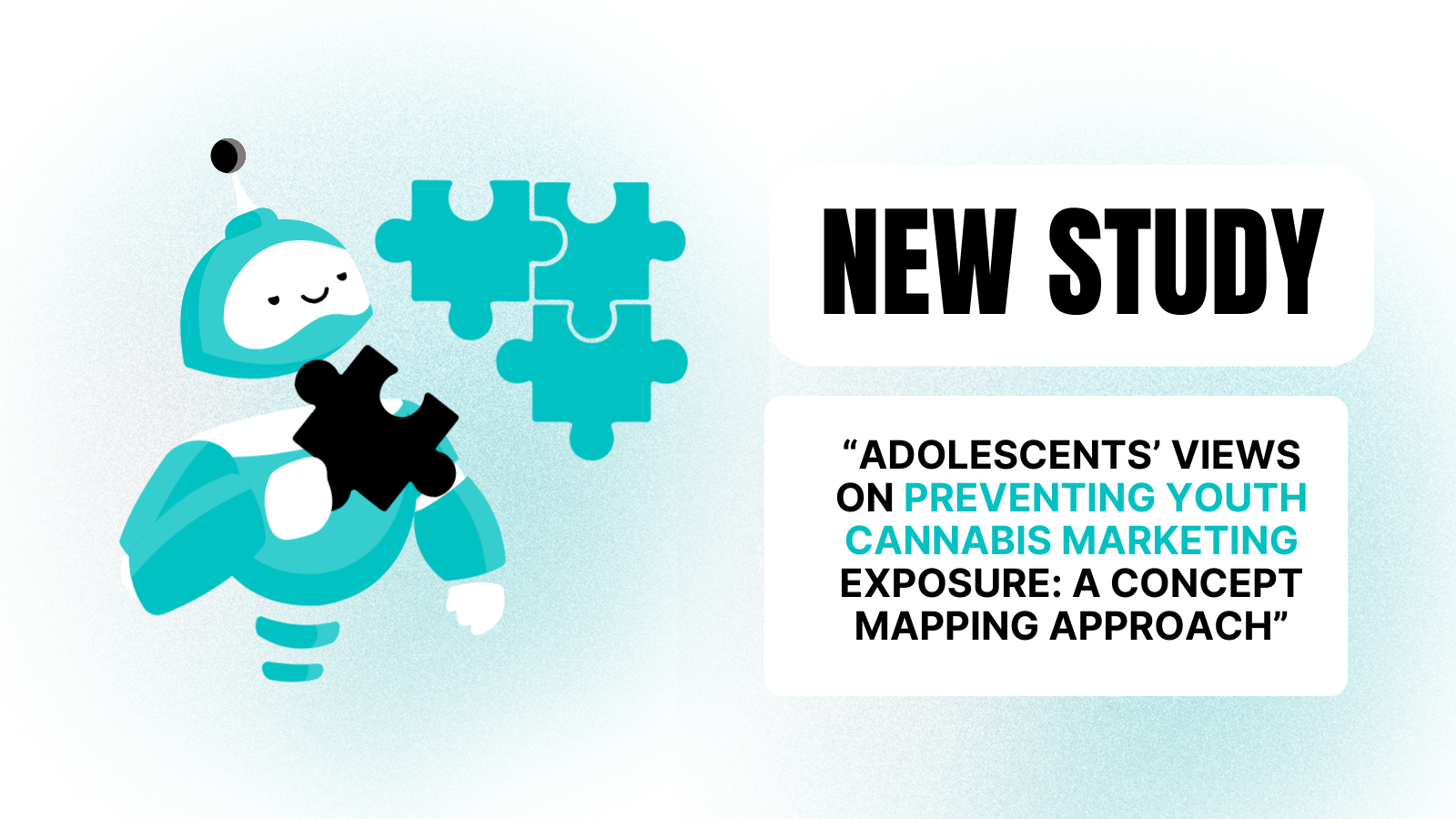By: Maggie Cooper
Dr. Megan Moreno and collaborators Dr. Marina Jenkins, Dr. Pamela Trangenstein, Dr. Jennifer Whitehill, and Zoe Stratman recently published a research study in the Journal of Studies on Alcohol and Drugs titled “Adolescents’ views on preventing youth cannabis marketing exposure: A concept mapping approach.”
Adolescent participants were asked to brainstorm ways that society can protect adolescents from the influence of cannabis marketing. They then sorted the statements into mutually exclusive categories. The results showed that adolescents found education as prevention to be important in preventing cannabis marketing exposure.
This isn’t the first time the SMAHRTeam has used this methodology. Let’s dive deeper into SMAHRT’s use of concept mapping.
What is concept mapping?
Concept mapping is a validated research method that uses both qualitative and quantitative approaches. Key stakeholders review and organize data into different categories which can then be analyzed individually or in clusters. A concept map is also a great way to visually represent data.
What other ways has SMAHRT used concept mapping in the past?
SMAHRT first used concept mapping in 2013 to develop a conceptual framework to explain influential aspects of Facebook. College student participants were given a prompt and asked to brainstorm ideas for an open-ended question. They were then asked to sort and rank all of the participant responses. The concept map in this study found four key areas of influence including connection, comparison, identification, and immersive experience on Facebook.
Another 2013 study conducted by the SMAHRTeam used concept mapping to create a theoretical framework describing problematic internet use (PIU). Participants in this study included college students and healthcare professionals that serve a young adult population. Participants were asked to finish the statement “A symptom or characteristic of Problematic Internet Use in adolescents and young adults is…” Then they were asked to rank and sort the responses. The concept map in this study found that PIU may be defined as risky, excessive, or impulsive internet use that could lead to negative physical, emotional, social, or functional consequences. Results from this study also lead to the creation of the validated Problematic and Risky Internet Use Screening Scale (PRIUSS) that assesses the impact of internet use on both offline and online social interactions, degree of emotional attachment to internet use, and salient problematic behaviors regarding internet use.
What did the researchers find in this most recent study?
Participants generated 119 unique statements about how society can protect adolescents from the influence of cannabis marketing where they sorted the statements from 2 to 17 groups. Overall, an 8 cluster solution was found to be the best fit for the data. The education cluster was the most important and anticipated. Participants expressed a need for further education around media literacy so adolescents can understand the ways marketing companies are trying to influence them. In this study, adolescent participants were also asked to participate in a focus group to interpret the categories. From that group, communication, honesty and transparency, and the role of the media themes emerged.

What does this mean for society?
Results from this study illustrates adolescents’ perspectives on key factors that may prevent cannabis marking from influencing youth through policy. Approaches from this study, including limiting access to marketing, enhancing education, and counteradvertising may be used by policy makers to further protect adolescents.
What else is out there on this topic?
Trangenstein, P. J., Whitehill, J. M., Jenkins, M. C., Jernigan, D. H., & Moreno, M. A. (2021). Cannabis marketing and problematic cannabis use among adolescents. Journal of studies on alcohol and drugs, 82(2), 288-296.
Trangenstein, P. J., Whitehill, J. M., Jenkins, M. C., Jernigan, D. H., & Moreno, M. A. (2019). Active cannabis marketing and adolescent past-year cannabis use. Drug and alcohol dependence, 204, 107548.
Moreno, M. A., Jenkins, M., Binger, K., Kelly, L., Trangenstein, P. J., Whitehill, J. M., & Jernigan, D. H. (2022). A content analysis of cannabis company adherence to marketing requirements in four states. Journal of studies on alcohol and drugs, 83(1), 27-36.


